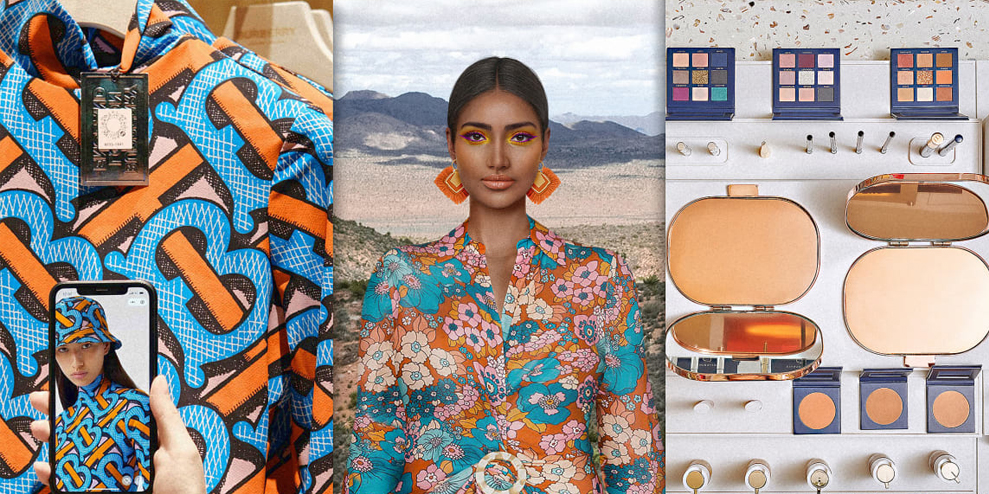The pandemic drove consumers online. Smart brands, like Burberry, American Eagle, and Net-a-Porter, responded with immersive digital experiences that suggest a more vibrant future for e-com.
For the past five years, many brands have worked hard to create immersive, entertaining experiences in their brick-and-mortar stores to entice customers in. (Remember Glossier’s millennial pink cafe? Or Casper’s nap bar?) In 2020, with stores shuttered for months, the pressure was on for brands to create immersive digital experiences for consumers.
This makes sense. During the pandemic, consumers flocked to the internet like never before: experts at IBM says that e-commerce grew by 20%, and the shift from physical stores to online shopping accelerated by five years. But the flip side of that is that brick-and-mortar revenues declined by 14% in 2020, creating a loss so great that even the spike in online sales won’t make up for it. To stay afloat, brands are now under incredible pressure to boost their digital experience. They need to offer fun, memorable, and seamless shopping experiences—or risk losing the consumers’ attention.
Ashley Schapiro, VP of global media at American Eagle, points out that people began spending far more time on the internet. So in some ways, brands aren’t just competing with one another, but also with the pull of Netflix, YouTube, and social media. She decided if American Eagle can’t beat ’em, it better join ’em. “We need to be where our customers are,” Schapiro says. “To be relevant and present with Gen Z, we needed to get creative and explore new avenues.” This is why Schapiro helped American Eagle pioneer the very first Snapchat store, where users can shop directly from the brand’s stories on the app.
American Eagle was one of many brands this year that explored new ways to capture our attention. As the retail sector got pummeled by the pandemic, brands rose to the occasion by nimbly and creatively trying new things they never would have done otherwise—and some of these experiments may end up shaping the future of shopping. Here are six unconventional new approaches that suggest that e-commerce is about to get a lot more entertaining.
AMERICAN EAGLE’S SNAPCHAT STORE
To launch American Eagle’s holiday collection, which featured a collaboration with Disney, the brand created an augmented reality store on Snapchat that would run from early November till Christmas. When you visited the brand’s page on the Snapchat app, you’d see a digital version of a real-life American Eagle store, stocked with products. As you navigated through the store, you might see Disney characters getting up to mischief: Mickey and Goofy might be dancing on a table or climbing up a fixture. If you saw a product you liked, you could click on it to buy it. Schapiro says it was important to find ways to keep customers coming back to the American Eagle feed. “We’ll refresh the visuals three times, so that if users came back, it would be a different experience,” she says. This was the first time that Snapchat users were able to shop directly on the app, magically blending together entertainment, social media, and shopping.
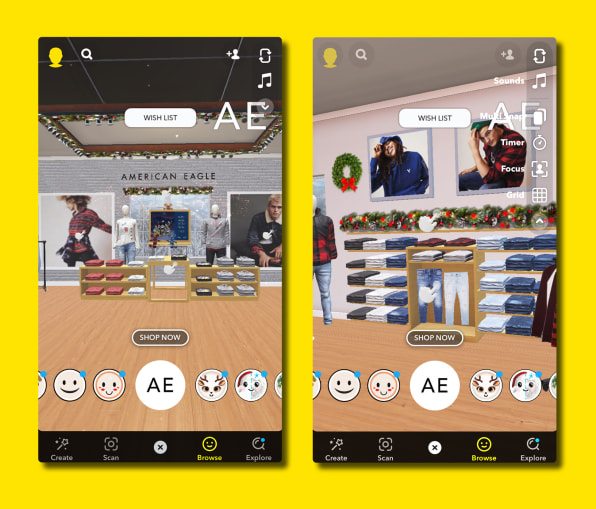
For people who were nostalgic for shopping in store, this immersive Snapchat experience mimicked the real thing closely, but the added AR elements made it feel distinctly 21st century. This was a winning strategy for American Eagle. The company garnered 41 million impressions of the store, which led to 26,000 purchases, totaling $1.9 million in sales to date. Now, the brand is exploring other creative ways of leveraging Snapchat as a shopping tool.
BEAUTYCOUNTER’S LIVE STORE
Beautycounter’s newest store, on Abbot Kinney Avenue in Los Angeles, is outfitted with a recording studio in the back, so that any in-store experience can be live-streamed to the clean beauty brand’s website. If new lipsticks come in, the in-store makeup artist might demonstrate what they look like on a customer, while live streaming it to digital shoppers on the other side of the screen. Those watching at home can ask a question—”Does it work for an evening look?” “What blush matches this color?”—and the makeup artist can respond in real time. And if the customers like a product they’re seeing in the video, they can click on it and be taken directly to the product page; the video they’re watching will pop out and continue playing in the corner of the screen while they browse.
Gregg Renfrew, founder and CEO of Beautycounter, says the studio is an opportunity to bridge the gap between the in-store and the at-home shopping experience. It allows customers online to get the buzz of shopping in-store, while also getting advice from experts about how to use particular products. But Refrew sees the studio as an experiment that will shed light on what Beautycounter’s really need from a store, and it will evolve as consumers respond to it. Renfrew wants to see how the platform evolves as consumers respond to it. “We’re going to iterate based on what customers want,” she says. “We’re not exactly sure how it will play out, but we know there’s something here.”
DREST VIDEO GAME
Could a video game be the future of online shopping? Lucy Yeomans, former editor in chief of Harper’s Bazaar, thinks so. This year, she launched a video game called Drest that allows the player to pretend to be a fashion editor. Every day, players get a selection of clothes, shoes, and accessories, and are invited to participate in a challenge, like dressing a model for a magazine cover photo shoot. The outfits are then judged by other players on the app, and as you score points, you can rise up through the ranks of the fashion industry.
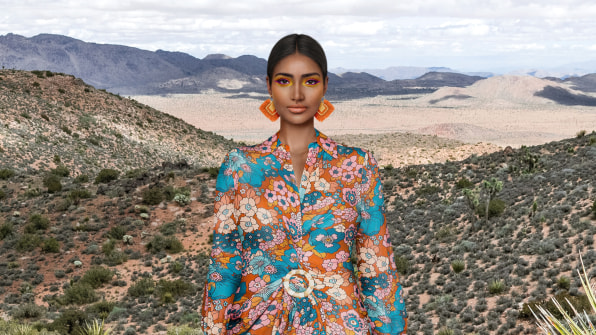
The genius of the game is that the clothes don’t just exist virtually. They are carefully rendered digital versions of real objects made by fashion houses. And you can buy many of them. Yeomans has worked with more than 200 brands, including Gucci, Prada, and Stella McCartney to create virtual pieces from their latest collections, and they can be purchased by clicking on Farfetch. In December, Drest worked with five supermodels, including Irina Shayk and Imaan Hammam, to create hyperrealistic avatars that would exist in the game. “The game is meant to be enjoyable for the player, but it can also serve a very practical role in the buying process,” Yeomans says. “You can put pieces together from different brands to style outfits on a realistic-looking model. This gives the customer confidence before buying the garment.”
BALENCIAGA’S VIDEO GAME
Video games were a big trend in the luxury industry this year, with many houses creating their own games in a bid to better connect with millennial consumers, 40% of whom identify as gamers. Gucci created an app that allowed customers to design their sneakers, which they could see on their own feet using AR or add to their Roblox character’s outfit. Estee Lauder created ’90s-style games that introduced customers to new products. In each case, it was easy to click to the brand’s website to begin shopping.
One of the most interesting examples of this came from Balenciaga, which introduced its 2021 collection in the form of an online video game, Afterworld: The Age of Tomorrow. The player goes on a journey in the near future, from Balenciaga’s store to various magical landscapes, where characters appear in different outfits from the collection. Like Drest’s game, these looks are very carefully rendered to look hyperrealistic. Since the game lived on Balenciaga’s website, it was easy to buy any item that caught your fancy as you played. The game drove home that the future of shopping is entertainment.
NET-A-PORTER’S WHATSAPP EIPS
Forget VIPs. Luxury retailer Net-a-Porter, has devised a new acronym for loyal, high-spending customers: EIP, which stands for “Extremely Important Person,” a somewhat cheeky term designed to separate the high fashion wheat from the chaff. And if you’re lucky enough to be on this list, a personal shopper from the company will connect with you on WhatsApp. At a time when customers can’t visit stores to stumble across designers and products they had never seen before, this allows them to enjoy the thrill of discovering new things.
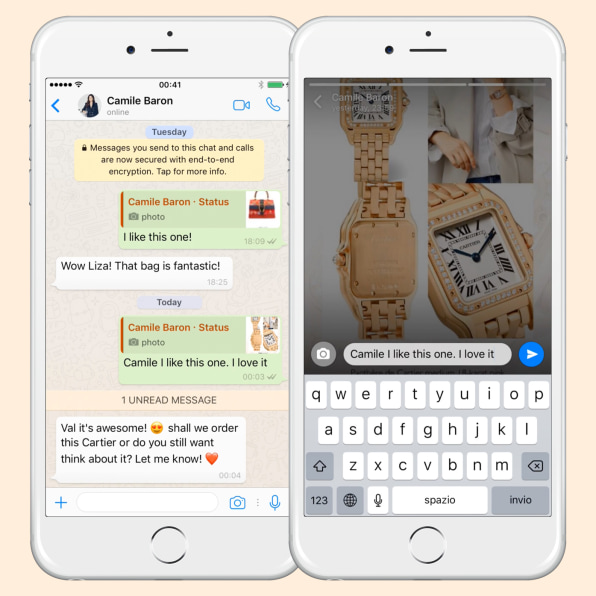
Achim Berg, who leads McKinsey’s fashion research, says WhatsApp has been a popular platform for luxury brands trying to connect with customers. It’s designed to replicate the luxury experience of the past, where a boutique would call a client directly when a new product came in the store he or she would like. “Engaging with clients through Whatsapp has only grown during this pandemic,” Berg says. “This only works with high margin products.”At Net-A-Porter, EIPs will communicate with the brand through a WhatsApp chat then receive PDF files with edits of clothes along with a voice memo from their personal shopper. Clothes will be delivered to the customers’ house, where they can try everything on for several days. The company will swing by to pick up anything they didn’t want to keep. Net-a-Porter’s labor-intensive strategy only makes sense for wealthy, hardcore fashionistas, which makes sense given the retailer’s target demographic of luxury shoppers. But it’s an example of how brands can help solve customer’s problems quickly and effectively through chat.
BURBERRY’S WECHAT STORE
This summer, while many consumers in the United States and Europe were scared to shop in brick and mortar stores because of surging COVID-19 rates, retail in China was getting back to normal. In August, Burberry unveiled a new store that wove together in-person and digital shopping experiences. It’s an example of how luxury retail might work as the world emerges from the pandemic.
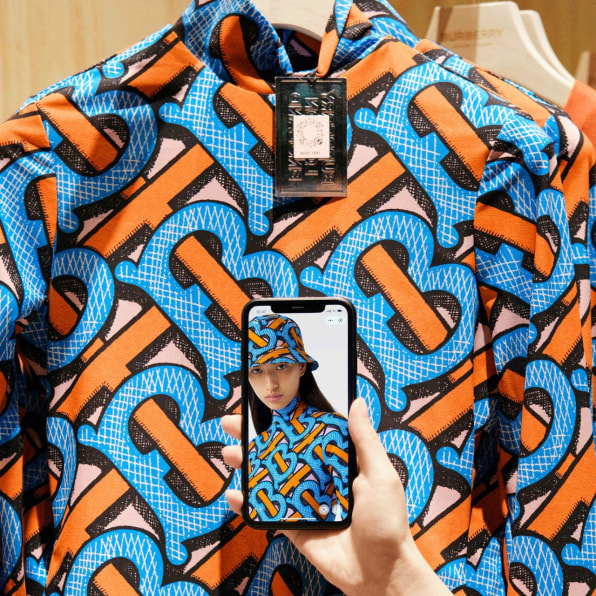
Today, Chinese customers account for a third of global luxury sales and 40% of Burberry’s business. Like many other luxury houses, Burberry uses WeChat, a popular messaging platform in China, to engage with customers. Burberry’s WeChat experience feels like a video game. As customers interact with the brand—either in-store or online—they can watch an animal character grow and evolve. As they collect digital currency for say, booking a fitting room or sharing a photo on social media, they can clothe their character in different Burberry looks.Burberry brought this experience to life by opening a 5,800-square-foot store in Shenzhen, China’s tech capital. As customers roamed the store, every item could be scanned on WeChat. You could scan a QR code to see a model wearing the item, or select the playlist in your changing room. This experience was widely covered by the fashion press, as a groundbreaking experiment with blending immersive in-person and digital shopping into one powerful experience. Burberry is now finding ways to incorporate it into other stores in an effort to win over young, tech-savvy Chinese customers.
This article first appeared in www.fastcompany.com

